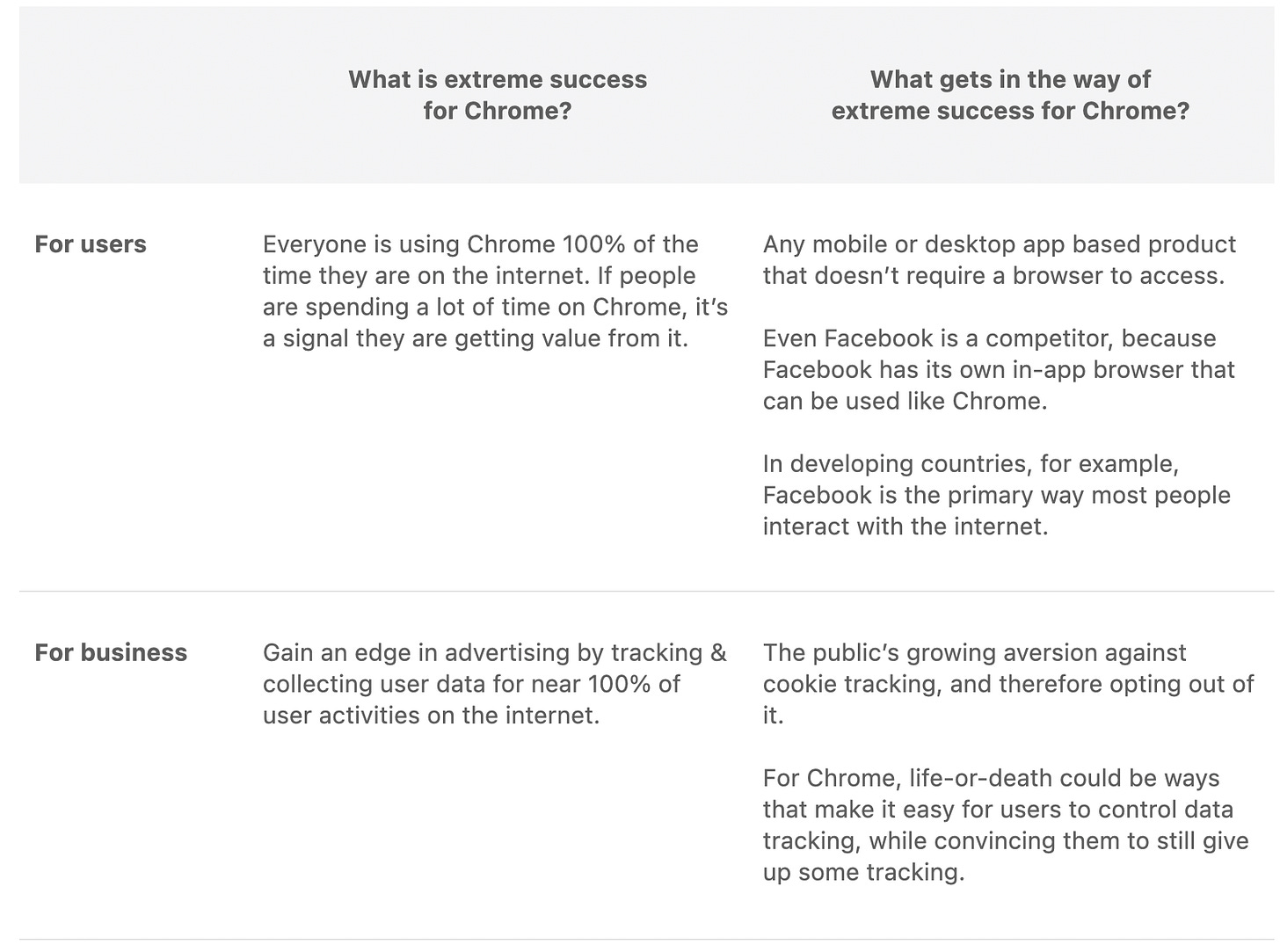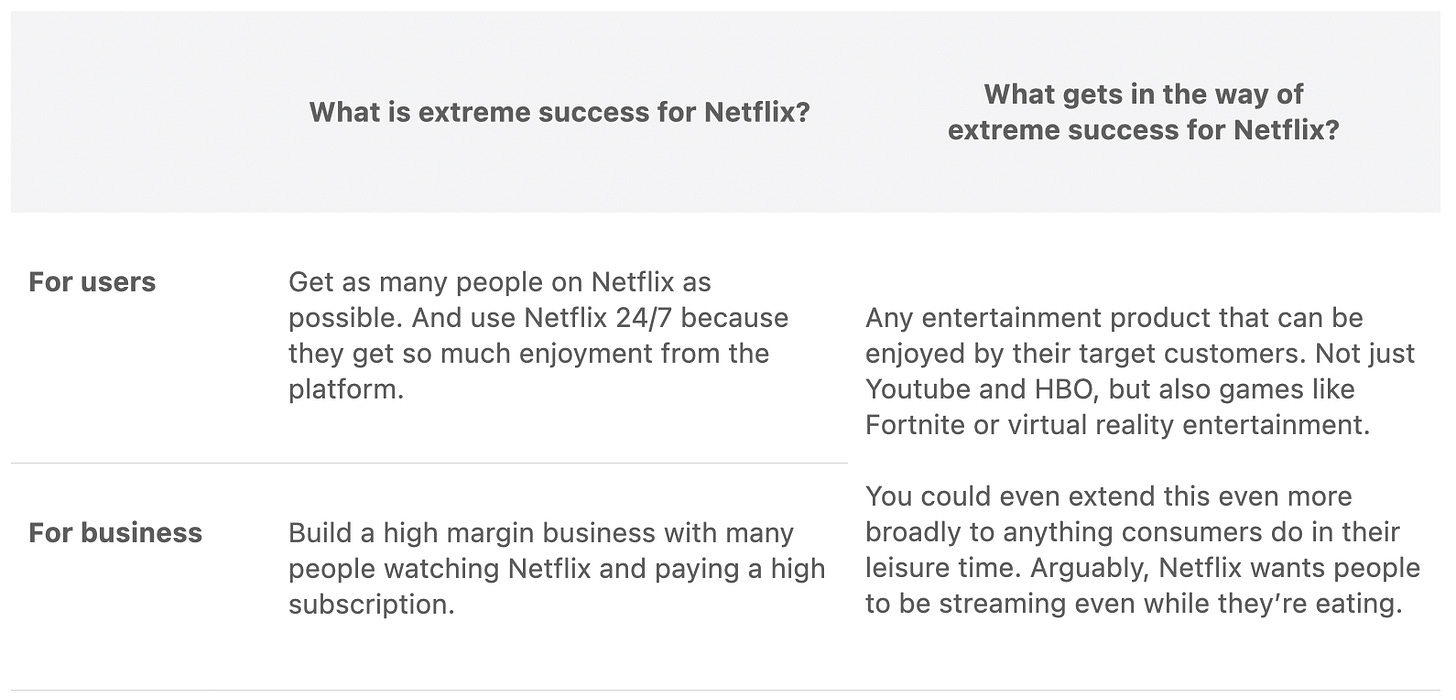Today’s memo is sponsored by Stytch:
Want to boost conversion and drive growth? Stytch makes user authentication and onboarding seamless and secure. Stytch offers customizable, out-of-the-box authentication with magic links, one tap social logins, biometrics, one-time passcodes, session management, and more.
With their API and SDKs, you can improve user conversion, retention, and security, while saving valuable engineering time. Current customers have seen a 60% increase in sign-up conversion after spending just one day on the integration. Check out Stytch today.
When people think of Netflix’s biggest competitors, they typically think of other video streaming platforms – Hulu, YouTube, and Prime Video. But the truth is, these platforms aren’t Netflix’s most threatening competitors – Netflix’s most threatening competitor is Fortnite.
“We compete with (and lose to) Fortnite more than HBO.”
- Reed Hastings, CEO of Netflix (2018 Q4 Letter to Shareholders)
The real competition aren’t other competitors that sell your products. The real competition are other companies that are fulfilling the same desires your customers are going to your product for. And in this case, it’s being entertained.
New PM: A company defines their competition by what they sell.
What are other video streaming platforms taking up market share?
Experienced PM: A company defines their competition by what desires they fulfill.
Netflix fulfills people’s desire to be entertained. What are other things people do for entertainment? Fortnite?
While it’s hard to shift your thinking from utility to fundamental desires, this myopia can risk overlooking the biggest threat to your product’s long term growth.
So what are concrete ways to get out of this myopia?
Frameworks for getting out of myopia
Strategy #1: Move from thinking to feeling.
Start with how you want your customers to feel.
After driving a Tesla, how do you feel? You feel like the rockstar around town.
After driving a Honda, how do you feel? You feel driven.
Dig deeper and ask, what do people really desire in life?
When I was a product manager at Tesla, I was struck by how expansively the company thought about fulfilling customers’ emotional needs, beyond the utility and function. We never sought to build “an electric car.” Rather, it was to build a really sexy car (because that’s the job that customers often hire their cars for - as status symbols that they can drive around the neighborhood), a sexy car that just happens to be electric.
This line of thinking even extended to feature development. When we were building Track Mode - a feature customers can turn on to adjust their stability and traction on a racing course – we didn’t think about it in terms of helping our customers make more stable turns. We thought about it in terms of, how can we enable Tesla drivers to feel like rockstars on the race track?
Strategy #2: Define what extreme success looks like. Then define everything that gets in the way. This is your competition.
Most companies have a north star metric that every team in the company works towards (e.g. “time well spent”, “watch time”), but you can take it one step further by thinking about the origins of where the north star comes from, starting with defining extreme success.
For example, with Google Chrome:
The traditional way of thinking about Chrome is as a web browser. Then, the obvious competitors are other web browsers like Safari and Microsoft Edge. Another way to think about Chrome is as someone’s portal to the internet. Then, anything that gives users a way to view the internet without Chrome is a potential competitor. When I was at Chrome, with the growing usage of mobile apps, we were worried that Chrome would become obsolete on mobile, because people would go directly to apps like Instagram, Amazon, Twitter, and only use Chrome as a last resort.
This way of thinking flipped the narrative and changed the way we thought about the right product strategy to stay ahead. In a previous world, we would have been being satisfied with being the world's #1 used browser, instead of getting out of the myopia to identify other competition.
Another example with Netflix:
How this shift in thinking affects downstream feature development
When you flip the narrative about what your product's competition really is, you'll gain a better understanding of the customer desires your product is fulfilling. You’ll also be able to make the right tradeoffs that get your users to stick around.
For example, when Alexis was a product manager on Instagram Video Chat, she might’ve considered video chat’s traditional competitors to be Zoom and FaceTime. This decision would have led her to prioritize Instagram Video Chat to have the best audio and video latency among competition.
Instead, she dug deeper into the needs Instagram Video Chat was actually fulfilling. The real competition were products that created a sense of belonging and closeness within social groups for teens and young adults. By being in a long video chat with friends, teens feel affirmed about their belonging to a social group and catch up on the socializing they couldn’t do adequately in the hallways at school. As a result, Instagram Video Chat was one of the first video chat platforms to have picture-in-picture, a minimized floating video in one corner of your phone, so that you can video chat while casually browsing the phone, which meant users could spend more time on the call together, building rapport and closeness. Building a feature like picture-in-picture would have been a no-go if she were only optimizing for latency – it could slow down video – however, the tradeoff made sense if she prioritized innate desires.
Flip the narrative about your competition
We're overwhelmingly used to thinking about competing on function rather than meaning and desire. It's easy to quantify watch time compared to other streaming platforms, and harder to quantify desire, so our intuitions take the mental shortcut. But going back to first principles about what our fundamental needs are can ultimately in the long run, help you get out of myopia.






This post rocks.
thanks for sharing. The Google example is creepy (and Netflix example is suggesting addiction), but point noted!